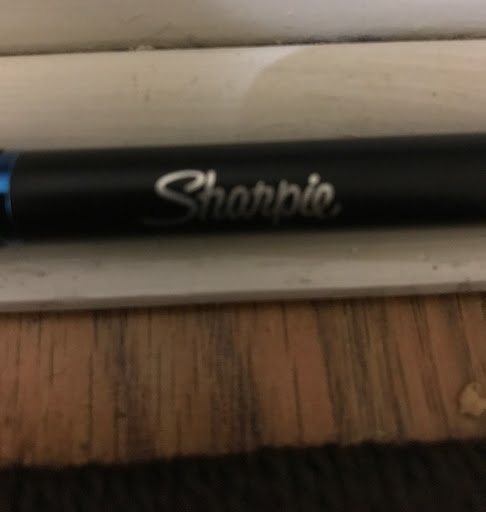Jeannette L Garcia
age ~36
from San Jose, CA
- Also known as:
-
- Jeanette L Garcia
- Janet Garcia
- Phone and address:
- 212 Muirfield Dr, San Jose, CA 95116
Jeannette Garcia Phones & Addresses
- 212 Muirfield Dr, San Jose, CA 95116
- Sacramento, CA
Us Patents
-
Method To Generate Microcapsules With Hexahydrotriazine (Ht)-Containing Shells
view source -
US Patent:20200046646, Feb 13, 2020
-
Filed:Oct 21, 2019
-
Appl. No.:16/658299
-
Inventors:- Armonk NY, US
Jeannette M. GARCIA - San Leandro CA, US
James L. HEDRICK - Pleasanton CA, US
Brandon M. KOBILKA - Fishkill NY, US
Jason T. WERTZ - Pleasant Valley NY, US
Rudy J. WOJTECKI - San Jose CA, US -
International Classification:A61K 9/50
-
Abstract:Materials and methods for preparing a payload-containing microcapsule with walls that have hexahydrotriazine (HT) and/or hemiaminal (HA) structures are disclosed. To an HT small molecule or a HA small molecule, or a combination thereof, in a solvent is added a cross-linking agent, NHCl, and a copolymer. The solution is acidified, and a payload agent is added. The HT small molecule and HA small molecule may have orthogonal functionality.
-
Macromolecular Chemotherapeutics
view source -
US Patent:20200023069, Jan 23, 2020
-
Filed:Sep 20, 2019
-
Appl. No.:16/577142
-
Inventors:- Armonk NY, US
- Singapore, SG
Jeannette M. Garcia - San Leandro CA, US
James Hedrick - Pleasanton CA, US
Nathaniel H. Park - San Jose CA, US
Rudy J. Wojtecki - San Jose CA, US
Chuan Yang - Hillington Green, SG
YiYan Yang - Singapore, SG -
International Classification:A61K 47/60
C08G 65/332
C08G 65/00
C08L 71/02
C08G 64/18
C08L 71/00
A61K 9/107
A61K 47/69
A61K 31/785
A61P 35/00 -
Abstract:Embodiments of the invention are directed to a macromolecular chemotherapeutic. A non-limiting example of the macromolecular chemotherapeutic includes a block copolymer. The block copolymer can include a water-soluble block, a cationic block, and a linker, wherein the linker is connected to the water-soluble bock and the charged block.
-
Portable And Autonomous, Iot Enabled, Optical Measurement System
view source -
US Patent:20200011797, Jan 9, 2020
-
Filed:Jul 18, 2019
-
Appl. No.:16/515968
-
Inventors:- Armonk NY, US
Jeannette M. Garcia - San Leandro CA, US
Ricardo L. Ohta - Sao Paulo, BR
Ademir F. Silva - Sao Paulo, BR
Mathias B. Steiner - Rio de Janeiro, BR
Jaione Tirapu Azpiroz - Rio de Janeiro, BR
Thomas G. Zimmerman - Cupertino CA, US -
International Classification:G01N 21/64
-
Abstract:A system is provided for performing metal trace analysis on a liquid sample. A sample holder holds an analysis substrate that includes a reference region and at least one test region. An ultraviolet (UV) light source emits ultraviolet light illuminating the liquid sample. An optical sensor detects radiation emanating from the liquid sample and converting the detected radiation into an electrical signal. A microcontroller processes the electrical signal. An external interface transmits the processed electrical signal to an external device. The analysis substrate is configured for manual movement by a user. A tracking system detects a sample scanning location for the metal trace analysis, and includes a light source, other than the UV light source, and another optical sensor. The other optical sensor detects light emitted by the light source.
-
Block Copolymers And Self-Assembling Nanoparticles Formed Therefrom
view source -
US Patent:20190307684, Oct 10, 2019
-
Filed:Jun 25, 2019
-
Appl. No.:16/451489
-
Inventors:- Armonk NY, US
- Matrix, SG
Mareva B. Fevre - San Jose CA, US
Jeannette Garcia - San Leandro CA, US
James L. Hedrick - Pleasanton CA, US
Eunice Leong - Singapore, SG
Nathaniel H. Park - San Jose CA, US
Rudy J. Wojtecki - San Jose CA, US
Yi Yan Yang - Singapore, SG -
International Classification:A61K 9/107
A61K 47/69
C08G 64/02
A61K 47/60
A61K 31/704
C08G 64/18
C08G 81/00 -
Abstract:The subject matter of this invention relates to block copolymers (BCPs) and, more particularly, to block copolymers capable of self-assembly into nanoparticles for the delivery of hydrophobic cargos. The BCPs include a hydrophobic block that contains a thioether functional group that is susceptible to oxidation, transforming the solubility of the block from hydrophobic to hydrophilic, thereby releasing the hydrophobic cargo of the nanoparticle.
-
Photoresponsive Hexahydrotriazine Polymers
view source -
US Patent:20190218342, Jul 18, 2019
-
Filed:Mar 22, 2019
-
Appl. No.:16/362275
-
Inventors:- Armonk NY, US
Jeannette M. Garcia - San Leandro CA, US
James L. Hedrick - Pleasanton CA, US
Jason T. Wertz - Pleasant Valley NY, US
Rudy J. Wojtecki - San Jose CA, US -
International Classification:C08G 73/06
G03F 7/038
C08G 12/08
G03F 7/20
G03F 7/30 -
Abstract:This disclosure describes new compositions and methods related to photoresponsive poly(hexahydrotriazines) and related polymers. In an embodiment, a method of patterning a substrate includes forming a liquid poly(hemiaminal) material by a process that includes forming a reaction mixture comprising a polar solvent, paraformaldehyde, and an aminobenzene compound having photoreactive groups, and heating the reaction mixture at a temperature up to 50 C. The method further includes applying the liquid poly(hemiaminal) material to a substrate; patterning the liquid poly(hemiaminal) material with UV light; and curing the liquid poly(hemiaminal) material to form a cured poly(hexahydrotriazine) polymer.
-
Porous/Nanoporous Pht
view source -
US Patent:20190211152, Jul 11, 2019
-
Filed:Mar 15, 2019
-
Appl. No.:16/355075
-
Inventors:- Armonk NY, US
Jeannette M. GARCIA - San Leandro CA, US
James L. HEDRICK - Pleasanton CA, US
Rudy J. WOJTECKI - San Jose CA, US -
International Classification:C08G 73/06
C08J 9/00
C08J 9/26
C08K 7/06 -
Abstract:In an embodiment, a polymeric material includes a plurality of hemiaminal units bonded together by a first linkage and a second linkage, wherein the first linkage is thermally stable and resistant to bases and the second linkage is thermally degradable and degradable by a base. In another embodiment, a method of forming nanoporous materials includes forming a polymer network with a chemically removable portion. The chemically removable portion may be polycarbonate polymer that is removable on application of heat or exposure to a base, or a polyhexahydrotriazine (PHT) or polyhemiaminal (PHA) polymer that is removable on exposure to an acid. Removing any portion of the polymer results in formation of nanoscopic pores as polymer chains are decomposed, leaving pores in the polymer matrix.
-
Polyhemiaminal And Polyhexahydrotriazine Materials From 1,4 Conjugate Addition Reactions
view source -
US Patent:20190177481, Jun 13, 2019
-
Filed:Feb 13, 2019
-
Appl. No.:16/274809
-
Inventors:- Armonk NY, US
Mareva FEVRE - San Jose CA, US
Jeannette M. GARCIA - San Leandro CA, US
James L. HEDRICK - Pleasanton CA, US
Rudy J. WOJTECKI - San Jose CA, US -
International Classification:C08G 73/06
C08C 19/22
C09D 179/04
C09D 161/22
C08G 16/02
C08G 12/08
C08G 73/02 -
Abstract:Polyhemiaminal (PHA) and polyhexahydrotriazine (PHT) materials are modified by 1,4 conjugate addition chemical reactions to produce a variety of molecular architectures comprising pendant groups and bridging segments. The materials are formed by a method that includes heating a mixture comprising solvent(s), paraformaldehyde, aromatic amine groups, aliphatic amine Michael donors, and Michael acceptors, such as acrylates. The reaction mixtures may be used to prepare polymer pre-impregnated materials and composites containing PHT matrix resin.
-
Block Copolymers And Self-Assembling Nanoparticles Formed Therefrom
view source -
US Patent:20190167584, Jun 6, 2019
-
Filed:Dec 5, 2017
-
Appl. No.:15/832157
-
Inventors:- Armonk NY, US
Willy Chin - Singapore, SG
Mareva B. Fevre - San Jose CA, US
Jeannette Garcia - San Leandro CA, US
James L. Hedrick - Pleasanton CA, US
Eunice Leong - Singapore, SG
Nathaniel H. Park - San Jose CA, US
Rudy J. Wojtecki - San Jose CA, US
Yi Yan Yang - Singapore, SG -
International Classification:A61K 9/107
A61K 47/69
A61K 47/60
C08G 64/18
C08G 64/02
C08G 81/00 -
Abstract:The subject matter of this invention relates to block copolymers (BCPs) and, more particularly, to block copolymers capable of self-assembly into nanoparticles for the delivery of hydrophobic cargos. The BCPs include a hydrophobic block that contains a thioether functional group that is susceptible to oxidation, transforming the solubility of the block from hydrophobic to hydrophilic, thereby releasing the hydrophobic cargo of the nanoparticle.
Resumes

Jeannette Garcia
view sourceLocation:
United States

Enfermeria En Cpepr
view sourcePosition:
Enfermeria at CPEPR
Location:
Estados Unidos
Industry:
Warehousing
Work:
CPEPR Actualmente tiene este puesto de trabajo
Enfermeria
Enfermeria

Jeannette Garcia
view sourceLocation:
United States

Accounting Assistant At Estrella Mountain Community College
view sourceLocation:
United States
Industry:
Higher Education

Jeannette Garcia
view sourceLocation:
United States

Jeannette Garcia
view sourceLocation:
United States
Youtube
Myspace
Mylife
Plaxo

Jeannette Garcia
view sourcePrime Locations
Flickr

Brianna Jeannette Garcia
view source
Verica Jeannette Garcia P...
view source
Alexa Jeannette Rosie Gar...
view source
Haley Jeannette Garcia
view source
Jeannette Garcia Polteral
view source
Jeanette Garcia
view source
Jeannette Garcia
view source
Jeannette Garcia
view sourceGoogleplus

Jeannette Garcia
Lived:
Campbell, Ca
Work:
Hi--Tech Lamps Inc. - Accountant/Office Clerk

Jeannette Garcia
Relationship:
Its_complicated
About:
I love to help animals horses r my favorite i love outside. i enjoy goin swimming i like scandia i like hangin wit friends

Jeannette Garcia

Jeannette Garcia

Jeannette Garcia

Jeannette Garcia

Jeannette Garcia

Jeannette Garcia
News

IBM Accidentally Creates New Self-Healing Polymer
view source- made in two forms, has endless applications. The first form of the polymer, which is the form that was accidentally discovered by Dr. Jeannette Garcia, is solid, and its applications include manufacturing and metal replacement. The second, liquid form of the polymer is what's shown in the video above.
- Date: May 15, 2014
- Category: Sci/Tech
- Source: Google
Classmates

Jeannette Garcia Jeannett...
view source
Albert Griffin - Jeannett...
view source
Jeannette Garcia Jaramill...
view source
Mokapu Elementary School,...
view sourceGraduates:
Jeannette Garcia (1992-1994),
Tina Ripley (1973-1977),
Jason Trepanier (1995-1997),
Melissa Thobois (1984-1991)
Tina Ripley (1973-1977),
Jason Trepanier (1995-1997),
Melissa Thobois (1984-1991)

Parks Junior College, Tho...
view sourceGraduates:
Sheryl Bueno (1979-1980),
Jeannette Garcia (1985-1989),
Susan James (1987-1991),
Ralph Azbill (1981-1985),
Sylvia Ward (1987-1991)
Jeannette Garcia (1985-1989),
Susan James (1987-1991),
Ralph Azbill (1981-1985),
Sylvia Ward (1987-1991)

Queen of Heaven Orphanage...
view sourceGraduates:
Jeannette Garcia (1947-1951),
Dorothy Puckett (1934-1938),
Mildred Maddox (1918-1922),
Gloria Espinoza (1949-1953)
Dorothy Puckett (1934-1938),
Mildred Maddox (1918-1922),
Gloria Espinoza (1949-1953)

Jeannette Taul garcia | C...
view sourceGet Report for Jeannette L Garcia from San Jose, CA, age ~36













